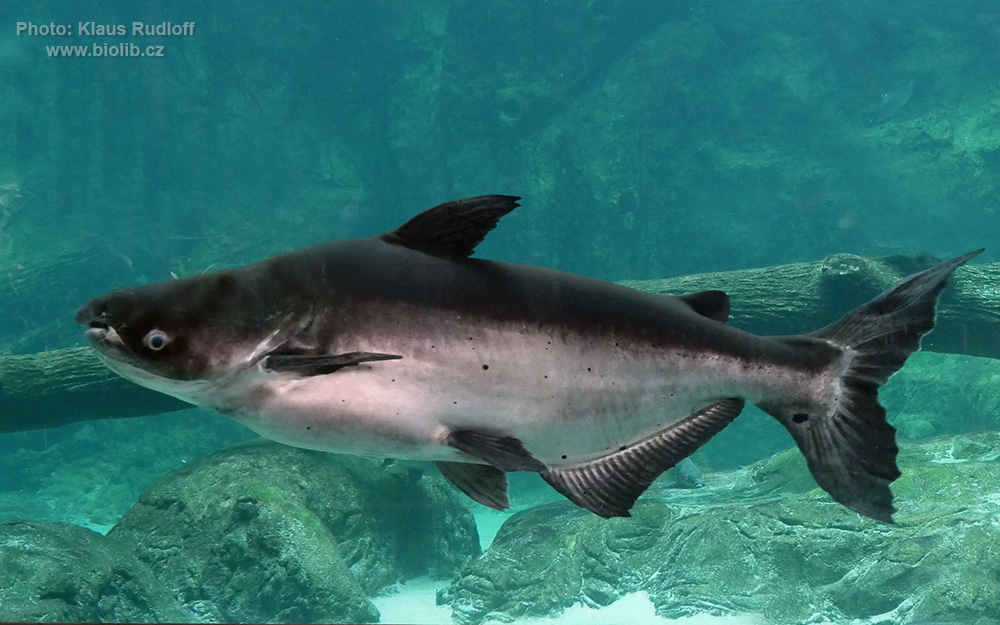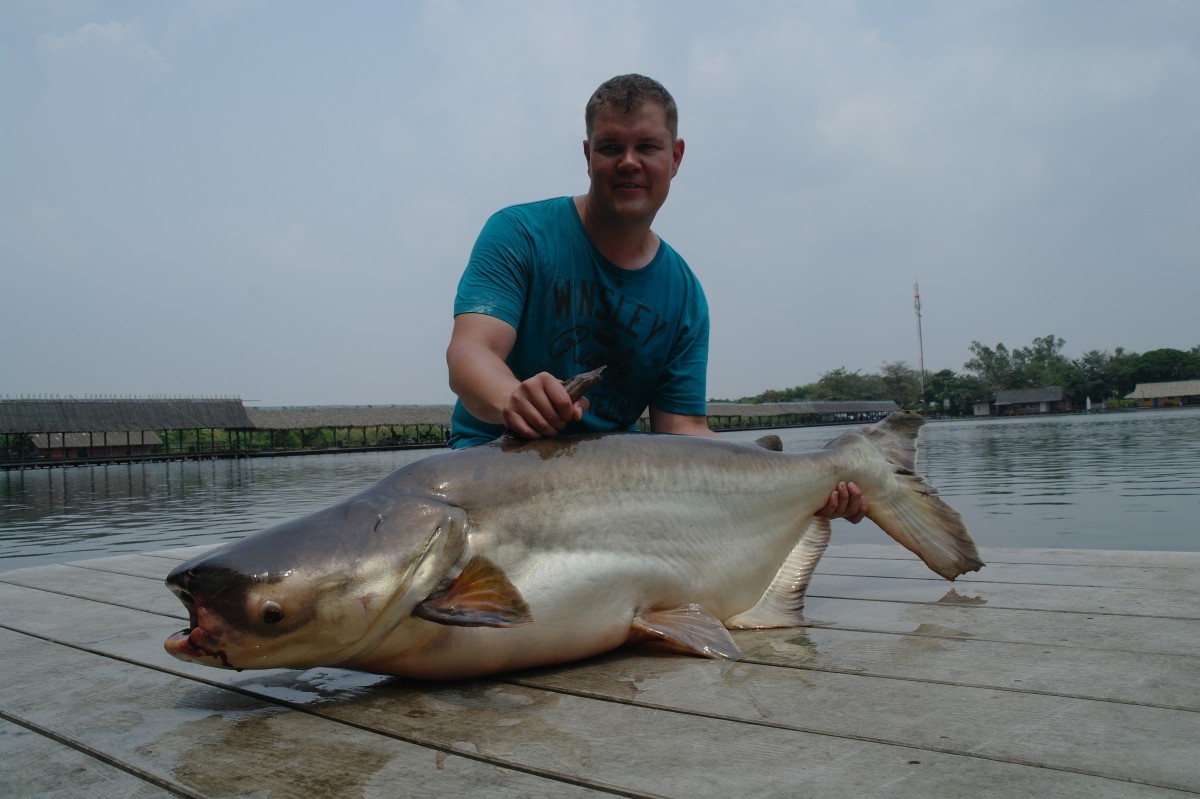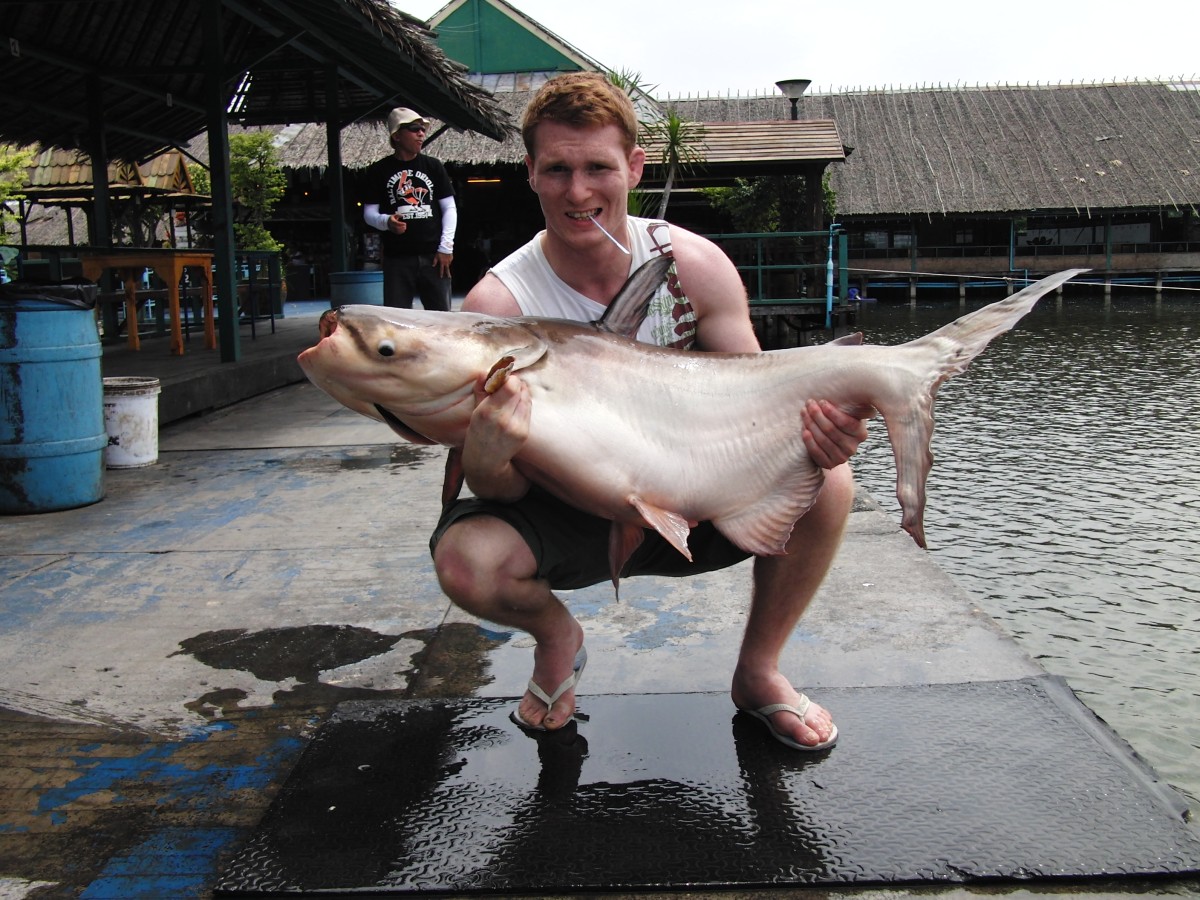Mekong giant catfish
(Pangasianodon gigas)

Classification
The Mekong giant catfish (Pangasianodon gigas), is a large, critically endangered species of catfish (order Siluriformes) in the shark catfish family (Pangasiidae), native to the Mekong basin in Southeast Asia and adjacent China. It is considered critically endangered due to accelerating habitat loss.
Description
Grey to white in colour and lacking stripes, the Mekong giant catfish is distinguished from other large catfish species in the river by the near-total lack of barbels and the absence of teeth. Juvenile fish wear barbels that shrink as they age.
Attaining an unconfirmed length of 3 m (9.8 ft), the Mekong giant catfish grows extremely quickly, reaching a mass of 150 to 200 kg (330 to 440 lb) in six years. It can reportedly weigh up to 350 kg (770 lb). The largest catch recorded in Thailand since record-keeping began in 1981 was a female measuring 2.7 m (8 ft 10 in) in length and weighing 293 kg (646 lb). This specimen, caught in 2005, is widely recognized as the largest freshwater fish ever caught (although the largest sturgeon species can far exceed this size, they are anadromous).
Numbers of young fish are declining. Spawning fish in upper Cambodia are being over harvested. Larval fish are threatened by habitat fragmentation due to the construction of dams which are becoming increasingly common.
Distribution and habitat
The Mekong giant catfish is a threatened species in the Mekong, and conservationists have focused on it as a flagship species to promote conservation on the river. Although research projects are currently ongoing, relatively little is known about this species. Historically, the fish natural range reached from the lower Mekong in Vietnam all the way to the northern reaches of the river in the Yunnan Province of China, spanning almost the entire 4,800 km (3,000 mi) length of the river.
Due to threats, this species no longer inhabits the majority of its original habitat. It is now believed to only exist in small, isolated populations in the middle Mekong region. Fish congregate during the beginning of the rainy season and migrate upstream to spawn. They live primarily in the main channel of the river, where the water depth is over 10 m (33 ft), while researchers, fishermen, and officials have found this species in the Tonle Sap River and Lake in Cambodia, a UNESCO Biosphere Reserve.
Feeding
As fry, this species feeds on zooplankton in the river and is known to be cannibalistic. After approximately one year, the fish becomes herbivorous, feeding on filamentous algae, probably ingesting larvae and periphyton accidentally. The fish likely obtains its food from algae growing on submerged rocky surfaces, as it does not have any sort of dentition. The Mekong giant catfish are toothless herbivores who lives off of the plants and algae in the river.













